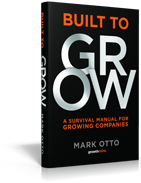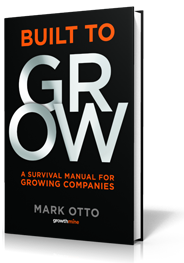
10 Rules for Mastering the Art of Feedback

It’s not easy to hear about our weaknesses. And telling others how they can improve is almost as difficult. Giving feedback can be awkward, messy, and uncomfortable. Feedback can raise defensiveness, fear, and anxiety. And when done badly, it can be emotionally devastating.
But feedback is critical.
An essential part of having a candid and open organization is providing honest feedback. But most managers have never been given any training in how to give feedback effectively. Too often the result is inconsistent feedback, or worse, poorly delivered feedback that lacks impact. But it doesn’t have to be that way. Done properly, providing direct feedback – both positive and corrective – is one of the most powerful tools managers have in the development of people. Here are 10 rules for mastering the art of feedback:
- Be Prepared. The words you use when giving feedback make all the difference. Rehearse what you are going to say and the way you plan to say it. Never shoot from the hip. The tone you use and your choice of words is just as important as the message you deliver. Giving feedback is uncomfortable for most managers – practice first.
- Put Feedback in Context. Even when you are offering suggestions for improvement to top performers, also look for opportunities to praise successes. Positive feedback tells people that their efforts are appreciated. Appreciation alone is praise and it has a compound effect. If you praise good performance regularly and at every opportunity, you’ll get more of it. On the other hand, don’t be overly positive with the feedback offered to people with lackluster performance.
- Be Straightforward and Specific. Constructive feedback provides specific information, focuses on issues, and is based on observations. When giving feedback, don’t speak in generalities; provide specific examples. For instance, don’t simply say, “You always miss deadlines”; instead say, “You have been late with the budget report three of the last four months.” The same is true for praise; telling a team member, “The presentation you gave this morning was well organized and made the problem in engineering easy for everyone to understand” is very clear about was done well and improves the chances of seeing more well-organized presentations in the future.
- Be Timely and Consistent. Whether the message is positive or constructive, the best opportunity to offer feedback is in real time so that tweaks can be made to enhance performance. Annual performance evaluations are not a substitute for regular, ongoing feedback throughout the year. Feedback should never be limited to an annual event. Timely and consistent feedback reinforces positive behavior, prevents small issues from becoming big problems, and creates an atmosphere of open communication.
- Don’t Overload. There is only so much feedback a person can handle. Choose no more than two or three important points you want to make and offer suggestions about those points. If you overload someone with feedback, it will become confusing about what needs to be improved or changed.
- Maintain Control. If the feedback is negative, show concern to communicate a sense of importance and urgency to the message. But never lose control of your emotions. Anger, frustration, disappointment, or sarcasm will only inflame the situation. The purpose of corrective feedback is to create awareness that leads to an improvement in performance. If you can’t offer corrective feedback in a constructive manner, you defeat its purpose.
- Explain the Consequences. If there’s a major issue, clearly state it. On occasion, you may need to let someone know that their job is on the line if they don’t make specific improvements. Good managers are clear about potential consequences if problems aren’t corrected. It should never be a surprise to someone if they don’t improve and are demoted or dismissed. If it’s a serious issue, be direct and straightforward.
- Create an Action Plan. Review the major points you discussed and create an action plan together. Never give corrective feedback without suggesting concrete steps for improvement. By summarizing and creating an action plan, you avoid misunderstandings and ensure that your message is clear. Always reinforce positive behavior and follow up as soon as you recognize efforts to improve.
- Have the Right Perspective. Feedback is much more likely to be successful when we view it as an opportunity to help someone work better. People want to know how they can improve. It’s your responsibility to tell them. The best feedback is sincerely and honestly provided to help. The objective of feedback is to offer guidance, either to support effective behavior, or to bring someone back on track toward successful performance.
- It’s Private. Always give constructive feedback in private. Explain that the conversation is confidential and should not be shared with others. Feedback sessions should never be the topic of hallway conversations.
Are you providing regular feedback to your team?





